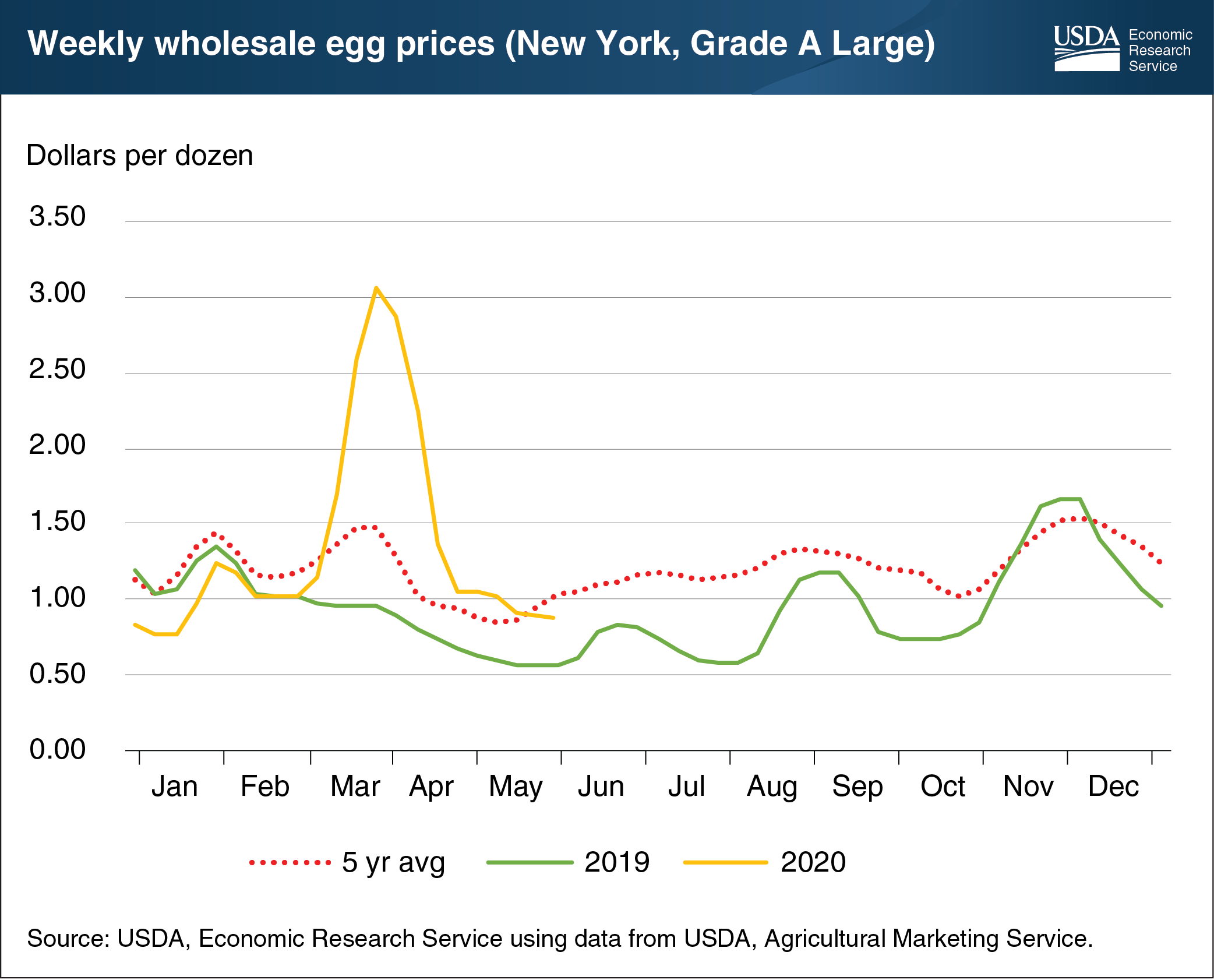Tightening egg supply and surge in retail demand pushed wholesale egg prices to record levels in March
- by Kim A. Ha
- 6/1/2020

As consumers prepared for more at-home meals due to COVID-19, retail demand for many products—particularly eggs—increased sharply in March. This surge in grocery store demand, coupled with supply constraints, caused wholesale egg prices to more than triple in March, reaching an all-time high of $3.07 per dozen. While egg prices were expected to rise in line with Easter, this increase was compounded by COVID-19-related retail activity. Then in April, prices decreased as rapidly as they increased, retreating to $1.05 per dozen by the end of the month. The March swell in retail demand coincided with a nearly yearlong industry effort to correct an oversupply of eggs that caused weaker wholesale prices for most of 2019 and the beginning of 2020. February and March table egg production decreased year over year for the first time since April 2016, driven by a sizeable counter seasonal reduction in the table egg layer flock. Short term measures to increase egg supplies, such as redirecting eggs from food service to retail or increasing egg production, were constrained. Differences in food service and retail egg packing equipment at the farm level limited the number of food service eggs that could be diverted to the retail sector. For the longer term, to increase egg production, any potential flock expansion would take at least 5 months—the time it takes for an egg to hatch and reach egg-laying maturity—to manifest itself in increased egg production. In late April, prices stabilized, suggesting that supply and demand imbalances have eased. This chart is drawn from the Economic Research Service Livestock, Dairy and Poultry Monthly Outlook, published in April and May 2020.
We’d welcome your feedback!
Would you be willing to answer a few quick questions about your experience?

